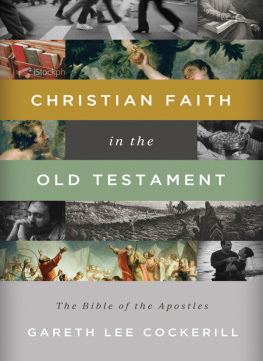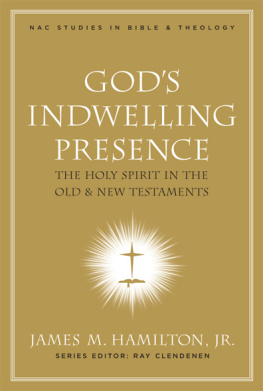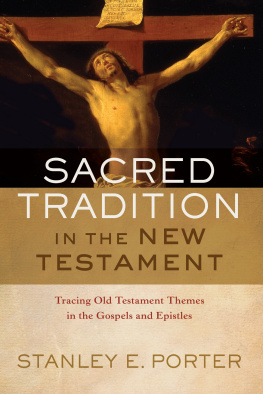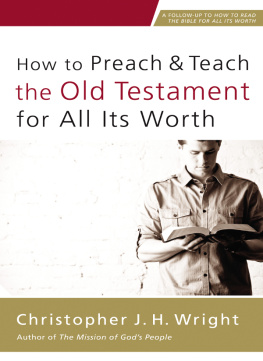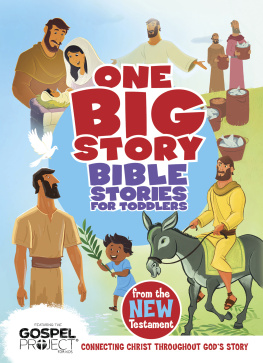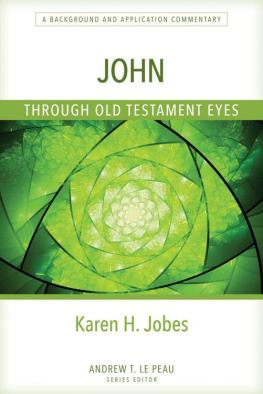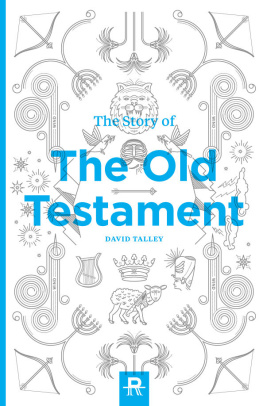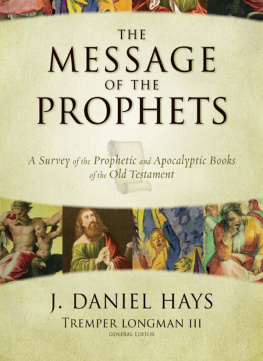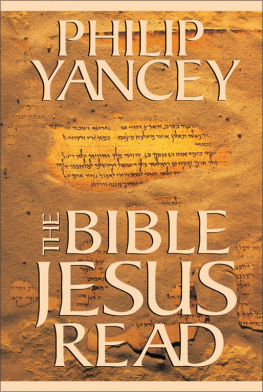Visit Tyndale online at tyndale.com.
Visit Tyndale Momentum online at tyndalemomentum.com.
Tyndale, Tyndales quill logo, Tyndale Momentum, and the Tyndale Momentum logo are registered trademarks of Tyndale House Ministries. Tyndale Momentum is a nonfiction imprint of Tyndale House Publishers, Carol Stream, Illinois.
Journey through the Old Testament: Understanding the Purpose, Themes, and Practical Implications of Each Old Testament Book of the Bible
Copyright 2022 by Church Answers. All rights reserved.
Cover photograph of art abstract copyright Veris Studio/Creative Market. All rights reserved.
Designed by Ron C. Kaufmann
Unless otherwise indicated, Scripture quotations are taken from the Holy Bible, New Living Translation, copyright 1996, 2004, 2015 by Tyndale House Foundation. Used by permission of Tyndale House Publishers, Carol Stream, Illinois 60188. All rights reserved.
Scripture quotations marked NIV are taken from the Holy Bible, New International Version, NIV, copyright 1973, 1978, 1984, 2011 by Biblica, Inc. Used by permission. All rights reserved worldwide.
For information about special discounts for bulk purchases, please contact Tyndale House Publishers at , or call 1-855-277-9400.
Library of Congress Cataloging-in-Publication Data
A catalog record for this book is available from the Library of Congress.
ISBN 978-1-4964-6196-4
Build: 2022-09-19 11:01:32 EPUB 3.0
List of Illustrations
Preface
Scope and Structure of This Study
T HE FIRST THIRTY-NINE books of the Bible intimidate many Christians. The long genealogies, unpronounceable names, obscure laws, and complex prophecies seem all but incomprehensible to them. Even pastors sometimes appear to treat the Old Testament as little more than a stockpile of illustrations for whatever topic theyve chosen to preach, or they stick to the familiar narratives about heroes of the faith.
What a tragedy! The Old Testament is a rich resource for understanding Gods truth, character, and ways. Its the Bible that Peter, Paul, Johnand Jesushad in their day. The New Testament didnt spring forth out of nothing; it has deep roots in the fertile soil of the Hebrew Scriptures. Neglecting these books or misunderstanding them invites disaster.
Scope of This Work
In a book of this size, I cannot pretend to answer every question someone might have about the Old Testament. Neither can I discuss the Old Testament without considering how it looks forward to the New Testament and the hope we have in Jesus Christ. Think of this as a field guide for the working Bible studenta handbook to help you identify important themes and features as you read the Bible text.
Each chapter has four sections. First, The Big Picture summarizes the main ideas of the book, the setting of its composition, and the time and places described. Second, Digging Into gives an outline of the book and an overview of each subdivision. Third, Living It Out shows some of the major theological themes of the book, designed to help you apply its truths to your life. Finally, Questions for Review provides some structure for reflecting on the contents of the chapter.
Structure of the Old Testament
The Old Testament includes a diverse collection of books, spanning the genres of history, poetry, wisdom literature, prophecy, and apocalypse. It typically has been arranged in one of two schemes, both of which have strengths and weaknesses. English-language Bibles follow the structure of the second-century BC Greek translation of the Old Testament, known as the Septuagint (LXX). Under this scheme, the Old Testament has five sections: Pentateuch (GenesisDeuteronomy), History (JoshuaEsther), Poetry (JobSong of Songs), Major Prophets (IsaiahDaniel), and Minor Prophets (HoseaMalachi). For this book, we will use instead the traditional Jewish order, the one Jesus probably used. It has three parts: Law (GenesisDeuteronomy), Prophets (including the Former Prophets: Joshua, Judges, 1 Samuel2 Kings; and the Latter Prophets: Isaiah, Jeremiah, Ezekiel, and HoseaMalachi); and the Writings (Psalms, Job, Proverbs, Ruth, Song of Songs, Ecclesiastes, Lamentations, Esther, Daniel, Ezra, Nehemiah, and 12 Chronicles).
This study will spend roughly equal time on each of the three genresLaw, Prophets, and Writings. Our approach will allow us to consider each genre as a whole before delving into each section, and to reflect on presenting Jesus from each type of literature. In studying Exodus, for example, you can quickly read the chapter on the Law to orient yourself to that genre, then read the chapter on Exodus to get specifics, and then the chapter on Jesus in the Law to help you apply it.
As you begin your study, remember that no substitute exists for spending time in the text of the Bible itself. Think of this book as a map or tourist guide to help you find your way around. Nothing, however, can compare to walking around and experiencing it for yourself. The Bible is unique because you can always talk to the author. Saturate your time in prayer, stay close to the Word of God, and use this book as a tool to help you become the person God has made you to be, for his glory.
Introduction
The Story of the Old Testament
M ANY RELIGIONS HAVE created myths that try to explain a spiritual world separate from physical reality. Stories of their gods describe how things came to be, unattached to any specific moment in history.
Israels Scriptures do not work that way. They do not describe symbolic events or a cycle repeating forever without resolution, but instead tell a storya story with a beginning, a middle, and hints of a coming end. Trying to understand the Old Testament without understanding this story is like listening to a Winston Churchill speech without knowing about the Second World War. You might understand his words, notice the clever rhetorical devices he used, and admire the strength of his oratory, but you would never really understand what he said and why. He delivered his speeches at specific moments in history, after some key events and before others. He gave them to specific people with particular needs, strengths, and weaknesses. When we understand what Churchills speeches meant in their own time, they take on a timeless quality. The Bible is much like that. To understand its parts correctly, we must gain some sense of its chronology.
In the beginning, God created. God created physical reality as a cathedral of his glory, not as an inconvenience we need to escape. As David put it in Psalm 19:1: The heavens proclaim the glory of God. The skies display his craftsmanship. The crown jewel of this creation was humanity, made in Gods image, designed to represent him to the rest of the universe. The Lord made man from the dust of the earth below and filled him with the breath of God above. God placed him as a bridge between the two spheres of reality: reigning over the creation and worshiping the creator. The man and his wife lived in peace and plenty in a garden planted in Eden (the Hebrew word for paradise). God blessed them to be fruitful, multiply, fill the earth, govern it, and enjoy every plant as food.
God forbade them from eating the fruit of only one tree: the tree of the knowledge of good and evil. Respecting that boundary was a way of acknowledging Gods right to reign. Rejecting the limit and setting themselves up as gods would cut them off from his blessing and lead to death for both them and their descendants. As we know from our imperfect world, they chose wrongly.


